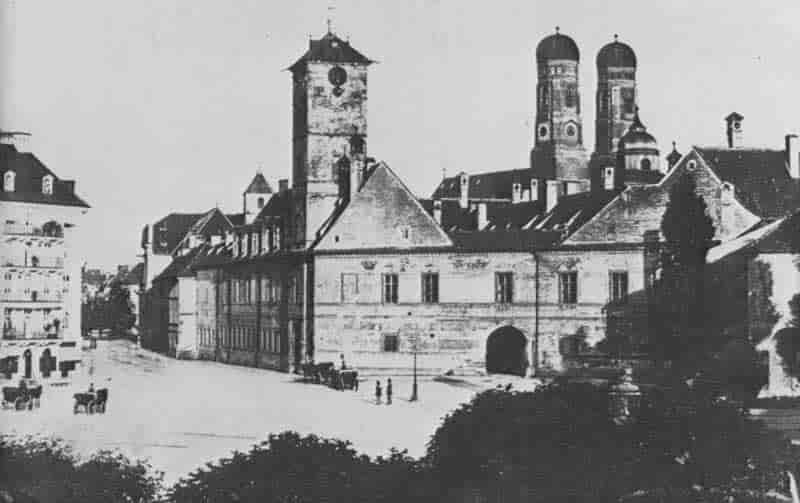.

The Maxburg from Maximiliansplatz. Franz Hanfstaengl
1854 Leverkusen, Agfa-Gevaert Photo-Historama. Germany. Architecture.
Herzog-Max-Burg, also known as Maxburg and Wilhelminische Veste,[1][2] was a Renaissance-style building complex in Munich, Germany. It was almost completely destroyed in World War II, but was later rebuilt in the 1950s. The reconstruction, named Neue Maxburg, currently houses several courthouses in Munich.
Herzog-Max-Burg was built for William V, Duke of Bavaria in 1593. It was designed by Friedrich Sustris and Wendel Dietrich [de], and its namesake was likely Maximilian Philipp Hieronymus, Duke of Bavaria-Leuchtenberg. In later years, the building housed many members of the House of Wittelsbach before its residence function was abandoned in favor of accommodating state authorities and institutions.[1][2]
Herzog-Max-Burg was severely damaged by Allied bombs in April 1944, with only the tower—called Max-Turm —surviving. After the war, discussions between state and city building offices and historic preservationists resulted in the decision to tear down all remnants of the building except the surviving tower.
----
Die Max-Burg vom Maximiliansplatz. Franz Hanfstaengl
1854.
Leverkusen, Agfa-Gevaert Photo-Historama.
Deutschland.
Architektur.
----

